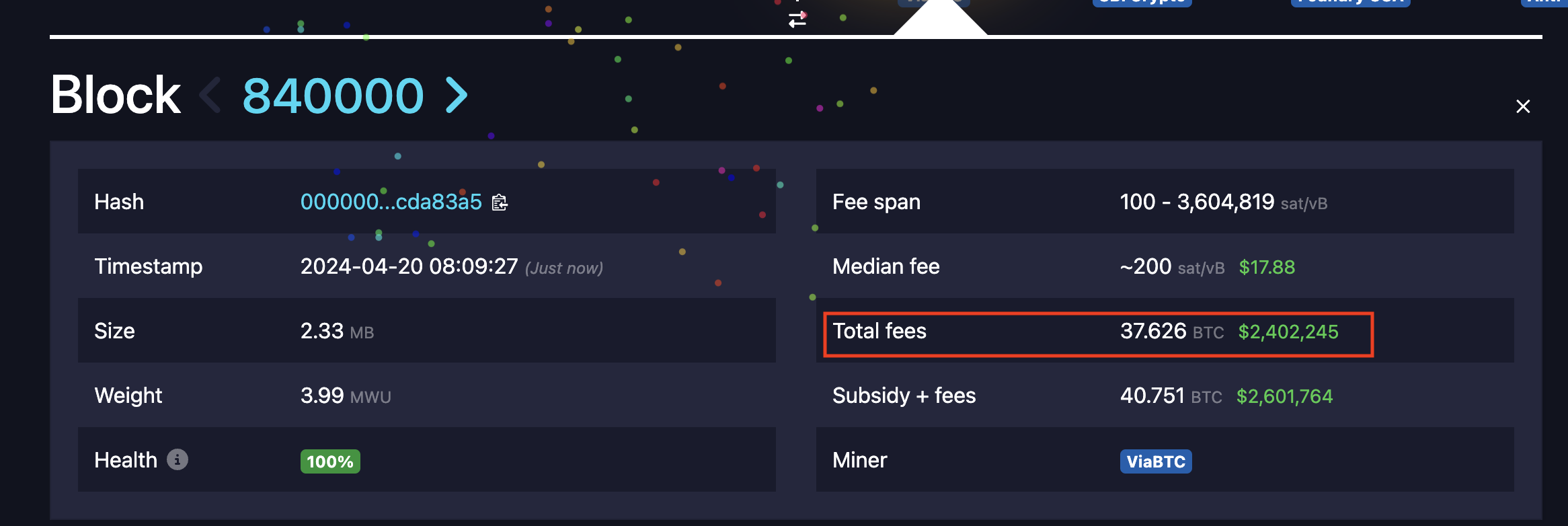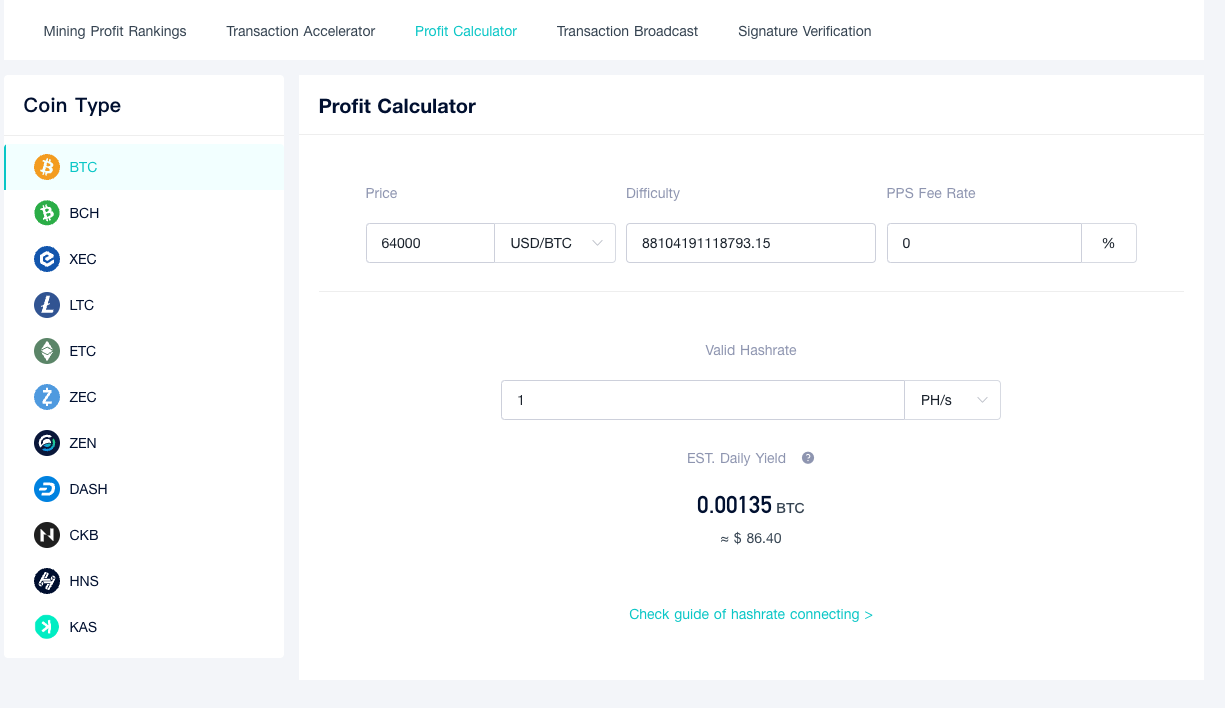With ViaBTC Pool successfully mining Bitcoin's 840,000th block, the fourth Bitcoin halving in history is officially complete. The result of this halving is that the miners now bring to the market 450 BTC per day instead of 900 BTC, and the coinbase reward for each new block has also decreased from 6.25 BTC to 3.125 BTC. It is clear from the results that the Bitcoin miners across the network are the most affected by the halving.

Bitcoin miners' income primarily comes from two sources: block rewards and miner fees. The halving directly reduces the block rewards received by miners, but their operating costs, including electricity, site rental, and equipment investment, do not decrease due to the halving. Meanwhile, the Bitcoin price has not risen due to the halving; instead, it has slightly decreased after the completion of the halving, currently fluctuating around $64,000. Without considering the part of income from miner fees, under the PPS model of the mining pool, the comparison of mining revenue before and after the halving is as follows:
Pre-Halving Revenue Per PH/s
On April 19, the day before the halving, the total network hashrate for Bitcoin was 621 EH/s. The theoretical BTC amount that could be mined with 1 PH/s of hashrate that day was: 1 / (6211000) * (6.256*24) = 0.0014492 (this revenue includes only block rewards). Based on the average Bitcoin price of $62,500 that day, the daily revenue per PH/s was approximately $90.575.
Post-Halving Revenue Per PH/s
After the halving, based on data from April 21, the total network hashrate for Bitcoin was 563 EH/s. The theoretical BTC amount that could be mined with 1 PH/s of hashrate that day was: 1 / (5631000) * (3.1256*24) = 0.00079929 (this revenue includes only block rewards). Based on the average Bitcoin price of $64,500 that day, the daily revenue per PH/s was approximately $51.554.
*The above calculations assume that the cost of electricity and other fixed costs remain unchanged.
Mining Fees Are Compensating for Post-Halving Losses
However, do not overlook the existence of mining fees. As the Bitcoin halving continues, with block rewards gradually decreasing, mining fees will become increasingly important. In payout schemes supported by pools like ViaBTC, such as PPS+ and PPLNS, miners can earn additional income from mining fees besides the block rewards.
Blockchain explorer data shows that block number 840,000 not only included a coinbase reward of 3.125 BTC but also contained 37.626 BTC in mining fees, making it the block with the highest ratio of mining fees to total rewards in history. Miners who choose to join the ViaBTC Pool can share this huge mining fee, valued at approximately $2.4 million.

On the Bitcoin network, it is very rare for mining fees to exceed the coinbase reward. However, following the halving, Mempool data indicates that out of 144 blocks after block height 840,000, 124 blocks had mining fees exceeding 3.125 BTC, with several blocks having over 10 BTC in mining fees.
Whether it's the Ordinals protocol that emerged in 2023, or the currently popular Runes protocol, both have ignited enthusiasm for user participation in Bitcoin network transactions, and have also brought more revenue from mining fees to miners. If these activities continue to thrive, then even though the coinbase reward has been halved, the revenue miners gain from mining fees will be sufficient to compensate for this loss.
This can be corroborated using the ViaBTC profit calculator. This calculator estimates based on the PPS+ revenue model and uses the average mining fees from the past 7 days.
How does the revenue per PH/s change after the halving if mining fees are included? According to the ViaBTC profit calculator, under the PPS+ model, 1 PH/s of hashrate can theoretically mine 0.00135 BTC per day. Compared to the previous calculation of 0.0014492 BTC without mining fees, the difference is only 0.0000992 BTC, which is less than $7 at the current Bitcoin price of $64,000.

Data from April 26th, sourced from ViaBTC’s Profit Calculator
Today, mining fees hold an increasingly significant position in Bitcoin miners' income, with the current upward trend in these fees serving as a good positive economic incentive. The Bitcoin network has set a total of 32 halvings, with no coinbase rewards beyond 2140, and so far, only four have been completed. In the future, as coinbase rewards gradually decrease, aside from potential doubling in Bitcoin price, mining fees will also become a key indicator to compensate for the decline in miners' earnings.